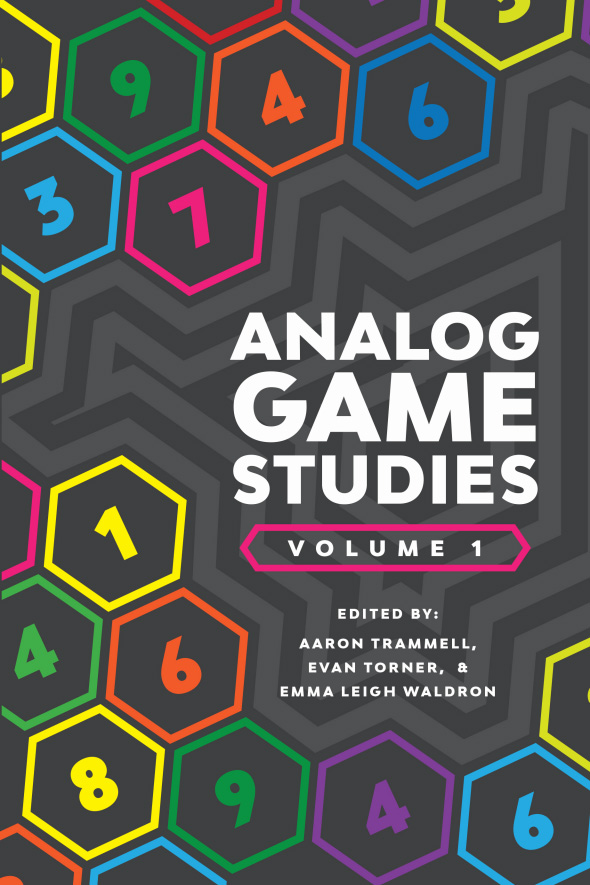In the relatively new field of game studies, digital games have attracted the most attention of researchers and scholars. While technology continued to improve, so did the acceptance of digital games as a viable medium for interactive storytelling and artistic expression. In today’s world, most people walk around with mobile devices that play games that look about as good as they did on game consoles a few years ago. As such, digital games have become much more pervasive in society and it is much easier to see them as legitimate fields of study. The problem is that while digital games garner so much attention in game studies as a field of scholarship, very little work has been done on analog games in comparison.
Since games come in numerous formats and vary in purpose and style of play, they are used in classes several different ways. In order to be used effectively, the needs of the students are a primary concern, since the goals and objectives of the class determine whether the use of games is a feasible, practical option (Conover, 1974). In addition, if a game is considered useful in a classroom setting, the teacher should pay special attention to how students engage with in-game tasks as well as their cognitive attempts to take advantage of the immersive benefits of the game (Murray, 1999). Over the years, numerous teachers and researchers studied how games can improve various factors of language acquisition. Most of the studies focus on digital games, but the rationale can apply to analog games as well.

Source: www.searchamateur.com/War-Games-Online/diplomacy-european-map.jpg
One relevant study by Bridge and Radford (2014) examined the digital version of the board game Diplomacy as a pedagogical tool for language learning. Due to the game’s online capabilities, one of the strengths that the article mentions is the ability to play the game outside of class. By having students play the game on their own time, the teacher saves precious time which would be taken up if he/she used the physical version in class. While the face-to-face interaction which comes with using the analog game is applicable and valuable for teaching strategic language use, the usefulness of the digital version cannot be denied.
An issue that comes with playing board games with other people is the personalities of some players may be stronger than others, influencing the decisions of more passive players. In face-to-face interactions, refusing or disagreeing with another player could be challenging due to the close proximity. When looking at the article by Bridge and Radford, we can assume that more passive players “might feel more at ease using electronic communication than verbal negotiations—and therefore might be more likely to engage because of the computer interface” (p. 431). The digital version also made it easier for the instructor to assess the students on their Willingness to Communicate (WtC), since they could write comments for everyone to see online.
In addition to the practical advantages the digital version entails, the students being studied responded quite favorably to playing Diplomacy. Most found the game useful in terms of critical thinking as well as learning about international relations theory/practice in addition to being fun to play (p. 433). By using this game centered on interpersonal communication and negotiation, the teacher can take advantage of an authentic material for pragmatic purposes and fostering WtC.
While the field of digital games as it relates to language instruction has received a great deal of attention in scholarly articles recently, analog games have not gotten as much attention, even though the volume and diversity of these games have improved just as well. In addition, analog games can provide an environment that is just as safe and contained as digital games to practice English language use, developing the potential to instill motivation and WtC within English language learners.
Just as with any kind of authentic material adapted for classroom usage, the teacher has to choose what is appropriate for the class as a whole. Some of the inferences that researchers have made concern how board games take considerably more time to set up than digital games and contain several small pieces, where one accidental bump could ruin an entire activity. However, several new games have been developed which are composed of nothing more than a handful of cards and a pile of chips.

Source: http://www.jesperjuul.net/ludologist/wp-content/uploads/2016/06/Analog-game-studies-vol-1-cover.jpg
With proper preparation and scaffolding, the teacher can use games to teach various language features, regardless if they are digital or analog. Understanding the advantages and limitations of each game type is important when choosing which game to use.
If you would like to learn more about analog games, Analog Game Studies is a great place to
start. In addition to the numerous links and articles on using analog games to teach, you can also download a PDF download of their book Analog Game Studies off of their website for free.
If you would like to learn more about the different ways you can use digital games in the classroom, stay tuned for more updates from Games2Teach or go to our ‘Explore’ section to see other resources out there.
-Ben Pearson











